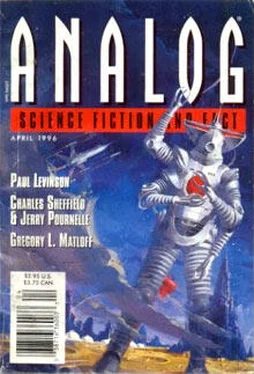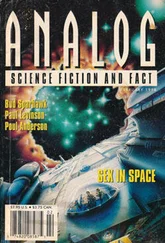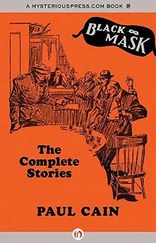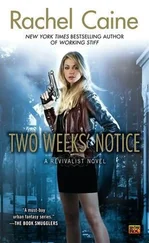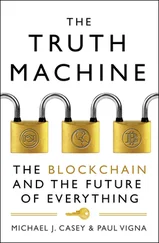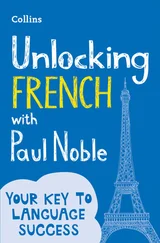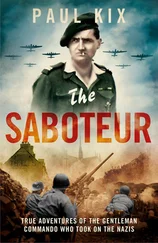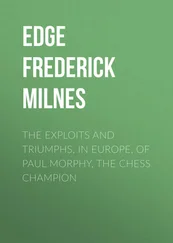Paul Levinson - The Copyright Notice Case
Здесь есть возможность читать онлайн «Paul Levinson - The Copyright Notice Case» весь текст электронной книги совершенно бесплатно (целиком полную версию без сокращений). В некоторых случаях можно слушать аудио, скачать через торрент в формате fb2 и присутствует краткое содержание. Жанр: Фантастика и фэнтези, на английском языке. Описание произведения, (предисловие) а так же отзывы посетителей доступны на портале библиотеки ЛибКат.
- Название:The Copyright Notice Case
- Автор:
- Жанр:
- Год:неизвестен
- ISBN:нет данных
- Рейтинг книги:4 / 5. Голосов: 1
-
Избранное:Добавить в избранное
- Отзывы:
-
Ваша оценка:
- 80
- 1
- 2
- 3
- 4
- 5
The Copyright Notice Case: краткое содержание, описание и аннотация
Предлагаем к чтению аннотацию, описание, краткое содержание или предисловие (зависит от того, что написал сам автор книги «The Copyright Notice Case»). Если вы не нашли необходимую информацию о книге — напишите в комментариях, мы постараемся отыскать её.
The Copyright Notice Case — читать онлайн бесплатно полную книгу (весь текст) целиком
Ниже представлен текст книги, разбитый по страницам. Система сохранения места последней прочитанной страницы, позволяет с удобством читать онлайн бесплатно книгу «The Copyright Notice Case», без необходимости каждый раз заново искать на чём Вы остановились. Поставьте закладку, и сможете в любой момент перейти на страницу, на которой закончили чтение.
Интервал:
Закладка:
The Copyright Notice Case
by Paul Levinson

The gust caught my umbrella the second I got out of my car, before I’d even had a chance to fully open the thing. I struggled for a bit, then gave in to the inevitable. Another inside-out dripping mess to deposit in the trash can. The wild force of nature wins again.
I turned my collar to the cold rain and hustled up the brownstone stairs. I pulled out my ID and showed it to the uniform.
“Down the hall, one flight up, second door on the right. They’re waiting for you, Dr. D’Amato.”
“Right,” I said. I hated these long brownstone stairs—rushing up them always made me breathless these days. I guess I could’ve walked up slowly, but that wasn’t my way.
“Phil,” that was Dave Spencer, even less hair and more belly than I, bent over a body, male, looked to be in his late twenties. “Come take a look at this.” Dave was the coroner. He often called me in for special consultations— came with my forensic territory.
I looked. The corpse had his eyes wide open, like he’d been shocked to death. But there were no electricity burns on the body that I could see, and in fact the nearest electrical outlet was some fifteen feet away, next to a computer on the other side of the room.
“Chemical, food allergy, lethal injection?” I rattled off the usual suspects in cases like this. And of course there was the unstated omnipresent social tetrad of choices: death by natural causes, accident, suicide, or murder.
“Not likely,” Dave shook his head. “No obvious puncture marks. No discoloration of the lips. We’ll know more after the full test course.”
“So what’s your best guess?” I asked.
“I have none,” Dave said. “That’s why I asked you in. It’s like something reached in and turned up the juice in this guy’s nervous system. Turned up the volume to lethal levels. Looks like heart attack and ten other things gone wrong here—never seen anything like it.”
“All right,” I said. “I’ll have a look around.” For some reason, I had a reputation in the department as the forensic scientist to call in when something inexplicable seemed to have happened. Well, I knew the reason—I’d been involved in my fair share of weirdo cases in my time, some of them public. And my popular writings in fields ranging from physics to genetics were pretty well known. “This guy have a name?”
“Glen Chaleff,” Dave replied. “Some kind of computer programmer.”
Chaleff’s apartment was nothing out of the ordinary. Bland furniture arranged unsurprisingly around off-white painted walls. The computer was the only thing that caught my eye. It was a sophisticated machine, lean and very powerful, it seemed to me, something well beyond the latest commercial chip. The screen had two words on it.
“Copyright Notice”
I put on my gloves before touching the keyboard—never mind the standard precaution of not doing anything to disturb possible fingerprints and evidence, I was thinking more about not getting electrocuted on the outside chance that’s what had happened to Chaleff. I pressed the up and down arrow keys to see if there was any other text above or below on the screen.
Nada. Just a bunch of hash above, three-quarters faded to nothing, like I had come in on the end game of some kind of program that self-destructed after use. I arrowed back to “Copyright Notice.”
It was fading away now, too.
Jenna Katen was the girlfriend. There’s almost always a girlfriend in these sorts of cases. Lieutenant in charge asked me if I wanted to come in and interview her. She was the reason Chaleff was considered a possible homicide.
“She discovered the body, she says he was working on some kind of genetic project that seems on cloud nine to me; I thought you might have a better chance of understanding what she’s talking about. You’re a real hound for that stuff, right?” That was the lieutenant’s briefing.
“Right.” I said.
Jenna was really striking. Looked a lot better than girlfriends of the deceased usually do, except on television. Soft green eyes and soft brown hair falling around her shoulders just the way I like it. Keep your mind on business, D’Amato.
I could see she’d been crying. “You look too smart for me to offer you a smoke,” I said. “How about some caffeine?”
“Sure,” she looked up.
“Hot or cold?”
“Diet soda would be nice.”
I went outside and coaxed a can from the machine.
“Why don’t you tell me your story from the beginning,” I said, trying to pour the soda into a cup so that it didn’t fizz over the top. Never worked. “Pretend I’m an ignoramus about the science—but tell me everything, and spell it out as much as you can.”
She sipped the soda and squeezed the cup. “Glen was working on a special facet of the human genome project.”
I nodded. “The one that hopes to eventually identify and map the function of every protein compound—every gene—on human chromosomes.”
“That’s right,” she said. “Except there are actually a whole bunch of interrelated human genome projects. And this is a special section of a special project. Early on—about two years ago—the main team discovered some odd material at the far edge on some X chromosomes.”
“On all female chromosomes?” I asked.
“No, the material has so far been seen on only about 8 percent of the X chromosomes studied.”
“OK,” I said. “And what do the researchers think this odd gene is responsible for?” I knew that that area of the X chromosome was home to at least one interesting human protein— the so-called gay gene, still under intense investigation.
“Well, that’s part of what makes this so unusual,” Jenna said. “The material’s not really a gene, and doesn’t seem responsible for any behavioral or expressive trait.”
“I’m not following you,” I said. This is likely where the lieutenant had lost comprehension.
“Well, the material’s genetic—it’s some sort of protein code—but it’s not really a gene. Only 5 percent of the DNA in our genome actually goes into genes. The rest is sometimes called ‘junk DNA,’ and I guess you could say our little corner of the genome project has been prospecting for an unlikely fortune of information in that junk pile. You know, more clues as to how the human genome works as a whole—how proteins outside of the genes themselves prime them for operation, act as regulating enzymes, that sort of thing.”
“OK,” I said. “And how did Glen fit in?”
“Well, we’ve—Glen’s—been trying to, well, read the code on that odd genetic material.”
“Come again?”
“The code seems amenable to some sort of binary transformation— you know, a mapping that would translate the connections inside the protein complex into a series of yes and nos, or ons and offs. Genes themselves operate on a four-part code— adenine binding to thymine, cytosine to guanine. They’re nucleotide bases, you know—A and C on one side of the helix zipper connecting to T and G on the other. I’m sorry, I’m getting too technical for you—”
“Not at all,” I said, though I could’ve lived without her reciting the specific names of the nucleotide bases. This was basic textbook stuff for DNA fingerprinting. “Please continue.”
“Well, like I was saying, the special material that Glen was working on actually has slightly different forms of the nucleotides that make them more like a binary than a four-part system.”
“And—” I prompted.
“And, well, the hope, the goal, was that if we could get a reliable transformation of that genetic code, whatever it was, into binary, then we could take that binary rendering and in turn convert it into words on a screen.”
Читать дальшеИнтервал:
Закладка:
Похожие книги на «The Copyright Notice Case»
Представляем Вашему вниманию похожие книги на «The Copyright Notice Case» списком для выбора. Мы отобрали схожую по названию и смыслу литературу в надежде предоставить читателям больше вариантов отыскать новые, интересные, ещё непрочитанные произведения.
Обсуждение, отзывы о книге «The Copyright Notice Case» и просто собственные мнения читателей. Оставьте ваши комментарии, напишите, что Вы думаете о произведении, его смысле или главных героях. Укажите что конкретно понравилось, а что нет, и почему Вы так считаете.
